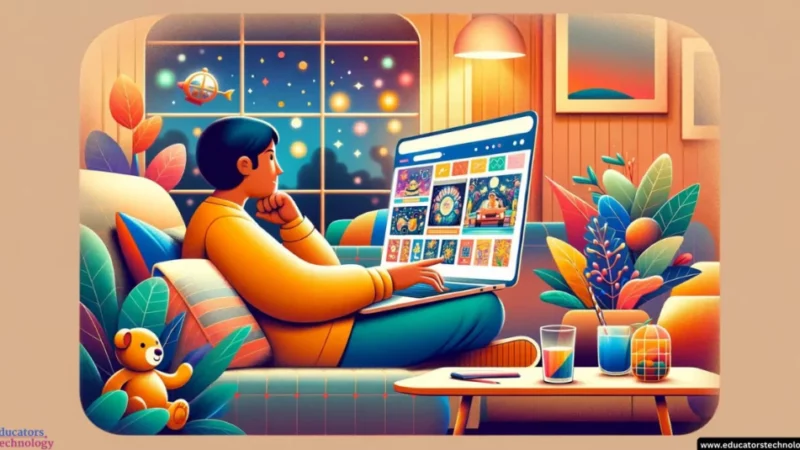15 Best Arabic Fonts On Canva
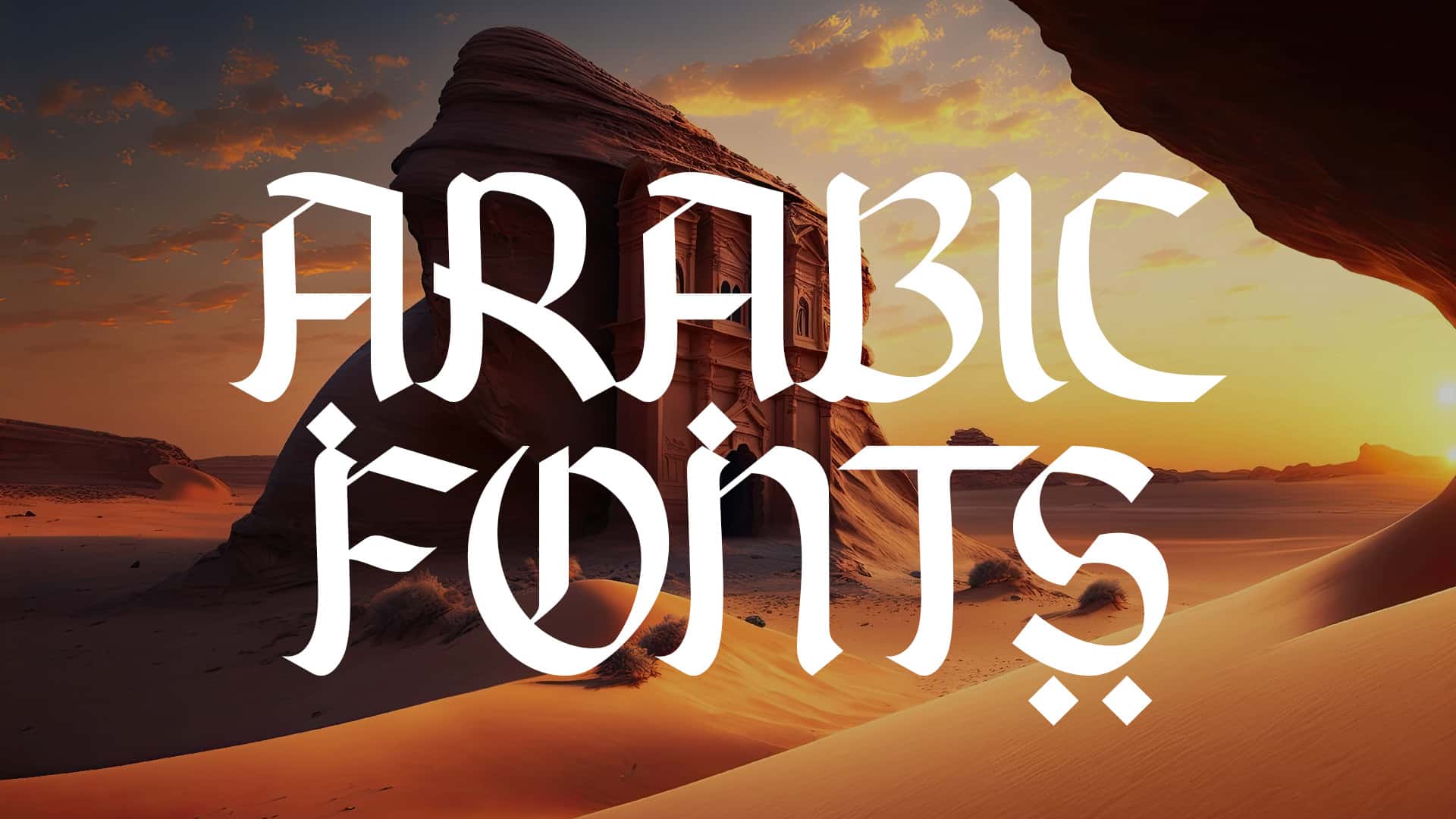
Your font choice is one of the factors that make your design attractive, especially to your target audience. Not only should it match the design theme, but it should also resonate with your target demographic.
If you are talking to someone who speaks the language, for example, because they will facilitate better communication. If you are working with brands that are located in regions where Arabic is spoken, the same rules apply.
It is also worth noting that Arabic calligraphy and writing has a long history, which has inspired many designers to use calligraphy typefaces to add flair and originality to their work.
Arabic fonts are used in designs that look legible and clear despite differences in style.
Having said that, Canva offers a ton of typefaces in this area that you can use to add uniqueness to your projects.
In this post, I’ve reviewed a few of them, outlining their uses and specific features. Thus, make sure to complete the reading.
So without further ado, let’s get started!
Best Arabic Fonts To Check Out On Canva
1) Katibeh
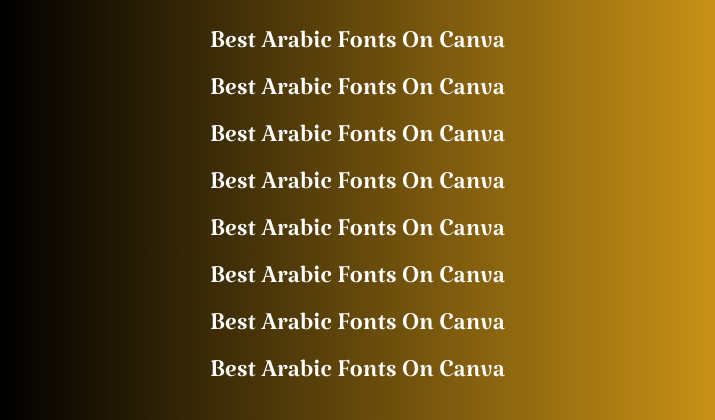
Another fantastic Arabic font to consider if you want to give your designs a fun and cheerful feel is Katiba. It was developed by Kourosh Begpour and is famous for its feature of ligatures, which facilitate the reading of long sentences.
The typeface works well on artistic and creative projects because of its handwritten style. The majority of designers use it for their headings or to draw attention to important parts within a piece of work.
It is interesting to note that the Katiba font includes a Latin typeface in addition to the Arabic text. As a result, you can write in many languages with it.
The typeface has a vintage look due to its distinctive short, clear strokes. Its striking blend of contemporary and traditional components makes it ideal for any type of design project.
2) Changa
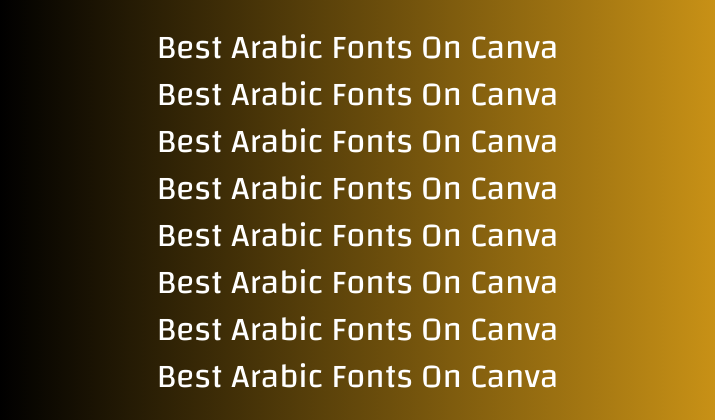
Changa is an interesting font that works well in both casual and formal designs. As you can see from the sample above, the font is designed in a neat square shape.
You can use less space between lines because uppercase letters are slightly longer. This typeface works well for headings, bit titles and any other text you want to draw attention to.
Best of all, it is even more versatile as it works with both Arabic and Latin scripts. Eduardo Toni eventually developed the font.
3) Childos Arabic Font
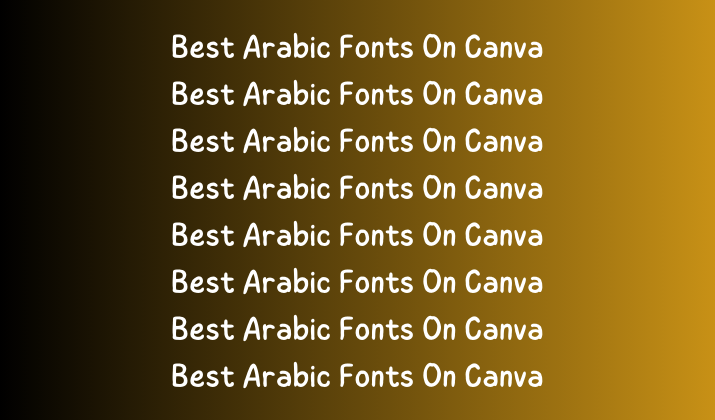
This beautiful handwritten font will give your work a whimsical and cheerful touch. It belongs to the Sans-Serif family as it has slightly rough and rounded letters.
The Childos Arabic font will do well for you if you want your work to have a personality that draws people in.
The designers of this typeface are Noor Syamsi and Bastam Al-Arifin. He made sure that it was available in five styles and that the Persian, Urdu and Arabic versions were all working properly.
4) Madani Arabic
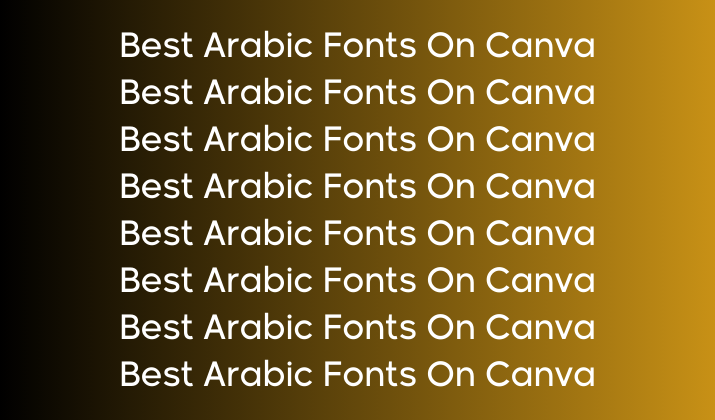
At first sight, Madani Arabic could appear to be just another typeface, but it’s much more than that. It may be found in nine various weights, ranging from thin to black, and an italic version to give your design a distinctive touch.
You can experiment with this typeface by giving tails to some letters and tipping others to create a more whimsical and distinctive appearance. These qualities make it suitable for general text as well as large topics.
Note that the Arabic Kofi style, which focuses on aligning Latin letters with geometric shapes, served as the inspiration for this typeface.
It is interesting to note that, despite being scheduled for digitization, the Noble Qur’an was written in the Madani Arabic font.
Finally, the Madani Arabic font will add some magic to your Canva creations whether you’re using a Mac or Windows computer.
5) Tufuli
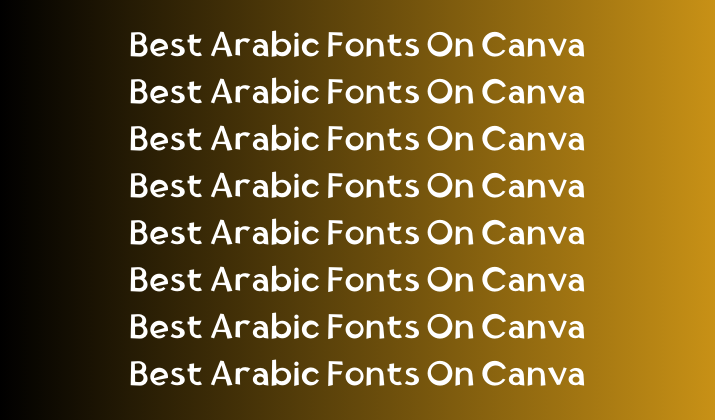
Tufuli means “childish” in Arabic, which is the inspiration behind this typeface. It’s a great option for projects like storybooks, kids’ parties, or any other light-hearted project because it creates a whimsical and fun atmosphere.
You’ll notice right away that the characters have these clean, italic shapes that give them a funky, funky look. They give the impression that your text is ready to tell a lighthearted story.
The best part is that Tufuli font is amazing not only for Arabic characters but also for Latin, Urdu and Persian. It’s safe to assume that this typeface variation resembles a contented, laughing child.
6) Tarif
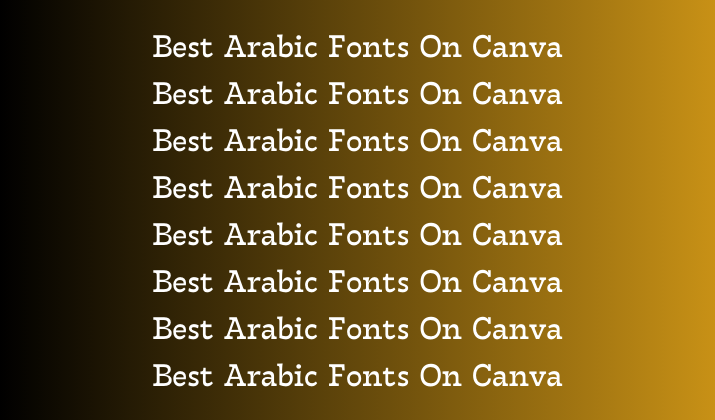
Tarif’s fascinating past dates back to the Convivencia period of history. Jews, Christians and Muslims lived peacefully together in Andalusia at that time. The Tariff font was later influenced by this period.
The typeface belongs to the slab serif font family and was created by Andrea Tartarelli for Zeta Fonts. It is a good option for large headlines, logos and display uses due to its strong lines.
You can use it for serious editorial work, especially when you want to make text readable, as it comes in seven different weight patterns.
7) Araboto Font
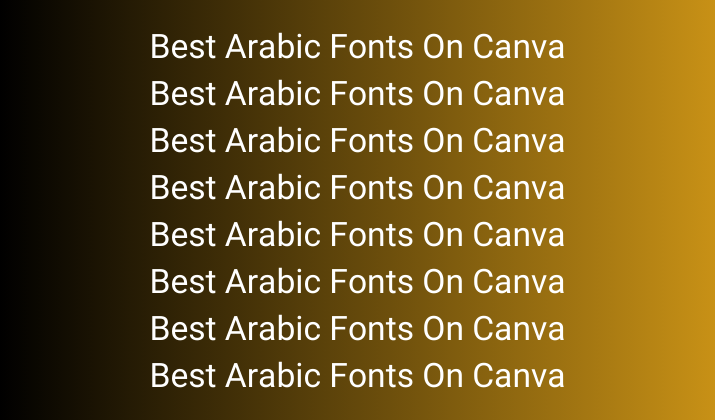
You can also check out the Arabic font known as Araboto on Canva. Despite its glossy appearance, you can use it to add a hint of elegance to your design projects.
When you’re creating graphics, logos, or any other kind of fashionable design, typefaces are fantastic.
The fact that it is available in normal and bold styles is the best feature. If you are looking for something beautiful and classy then the normal version is the better option.
The bold option works best when you want to make a text stand out to your audience. Because of this, the typeface can be used for a wide range of applications.
8) Siwa
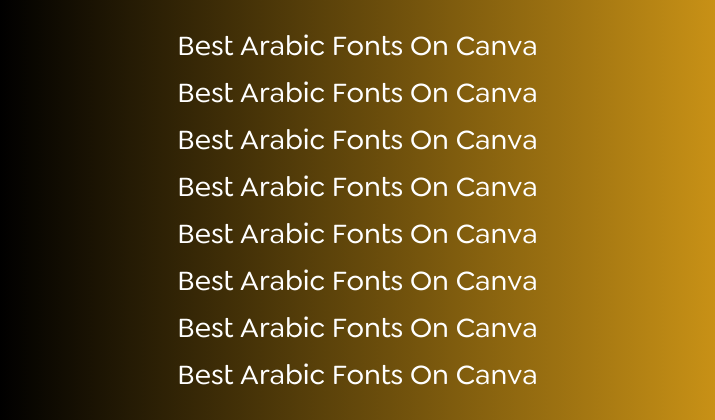
Siwa Font, designed by Abdo Muhammad and Ibrahim Hamdi, is inspired by classical Arabic calligraphy to give your projects a contemporary edge.
It’s a very flexible typeface to experiment with because of this beautiful harmony between old and new. It can be applied to digital, print and web media.
Additionally, nine styles are available to choose from: Regular, Bold, Light, Semi-Bold, Medium, Heavy, Black, Extra Bold and Thin. Siva offers a wide selection to suit every style preference.
It is interesting to note that each style has its own characteristics, and ultimately, it experiments with letterforms and stroke widths to achieve a unique appearance.
Overall, Siva typefaces include everything you need to enhance your work, whether you’re working on a timeless or contemporary design. Having a typeface that combines the best of both worlds is incredibly refreshing.
9) Mirza
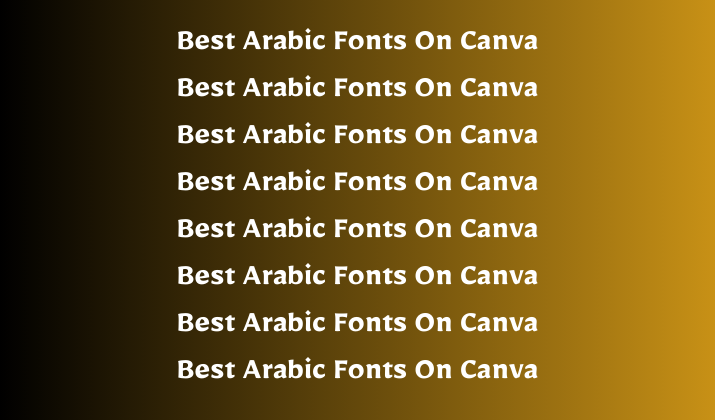
You can immediately tell how bold and readable this typeface is. The Mirza typeface, which corresponds to the Arabic Nasakh writing style, is legible and easy to understand. His intention was to use the text for a wider reading.
If you want to use this typeface in your design to make a strong statement, you should. It’s also a wise choice if you want readers to focus on your design instead of quickly skimming through the text because it contains so much content.
Another thing to know about Mirza is that you can choose how bold or light your text is, as it comes in four different styles, or “weights.”
Apart from being aesthetically beautiful and adhering to established principles of Arabic and Persian aesthetics, Mirza’s design also strives for refinement.
This typeface is helpful for assignments that require writing in Latin or English in addition to Arabic.
10) Amiri
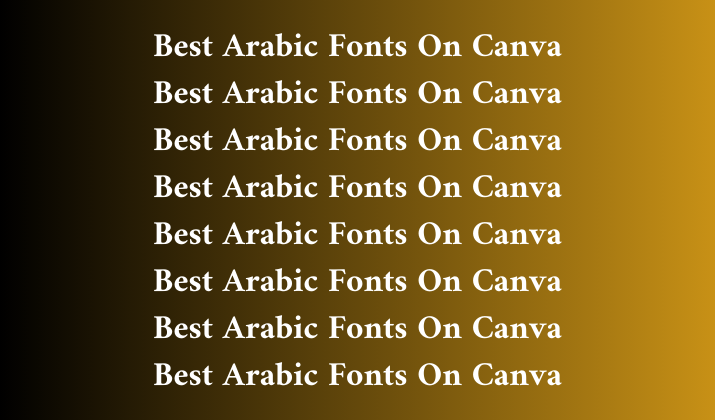
The Amiri font, created by renowned Egyptian typographer Khaled Hosni, is a traditional Arabic font inspired by the Naskh style.
The versatility of this font cannot be understated. It is found in most print and digital media, including books, newspapers, scholarly publications, and cultural artifacts, due to its traditional and highly readable style.
This typeface works well for headlines as well as body text. Additionally, it can be applied to any type of design project, especially those that aim to achieve a traditional Arabic style. Because of its sophisticated and attractive look.
It is amazing how much Khalid has contributed to the creation of Arabic typefaces. It is clear from Amiri’s work that readability was prioritized to make Arabic text legible in both small and large sizes.
Above all, the typeface supports a large character set as it meets Unicode requirements.
The Amiri typeface fascinates me the most because it respects the legacy of ancient Arabic calligraphy while also meeting modern typographic requirements. This elegant blend of modern and traditional design adds to its adaptability.
11) Lateef
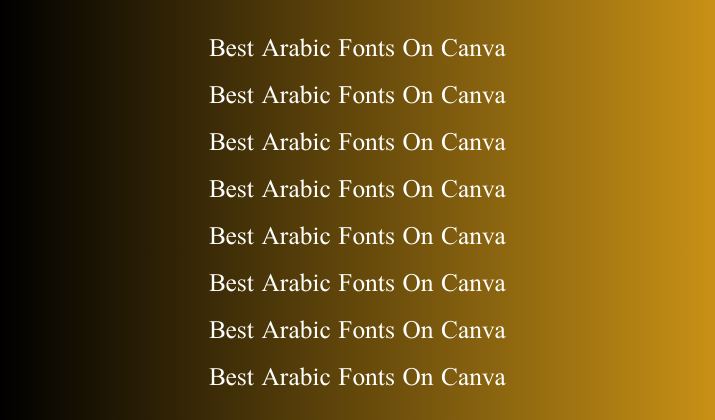
This typeface bears the name of Shah Abdul Latif Bhitai, a well-known Sufi and poet of Sindh. It is mainly used in designs made in South Asian languages such as Sindhi.
This typeface family is quite versatile, as I’ve seen, as it comes in seven weights. In addition, Latif typeface adapts to every situation by using the latest OpenType font technology and incorporating separate glyphs for specific characters.
Choose this font if you want to give your work a little flair and individuality. His characters are distinctive and eloquent.
12) Noto Naskh Arabic
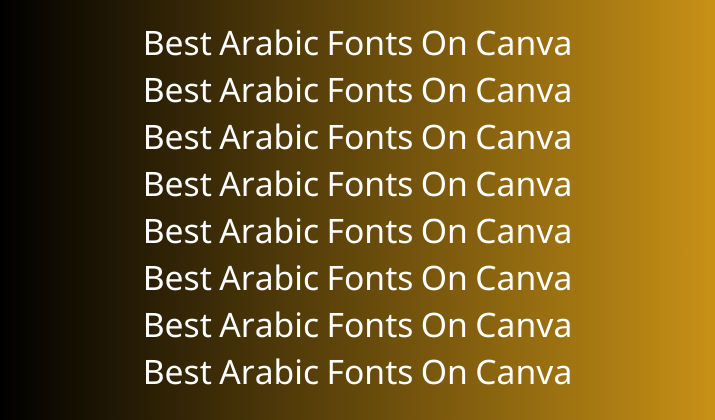
The Monotype design team, consisting of David Williams, Muhammad Dakic, and Mizer Qandah, was responsible for creating the Noto Nasik. The accompanying example shows you how simple and clean this font looks.
It is a great option for designers who want to add modern simplicity to their creations due to its flawless blend of simplicity and refinement.
You should use the font in places where you want to convey information successfully because the characters are legible and easy to see, especially in body text or contexts where legibility is important.
Noto Nasik exudes beauty despite its simple appearance. Its exquisite curves and minute details make it very clear.
This typeface’s exceptional adaptability makes it suitable for a variety of design purposes, such as professional documents, instructional materials, and creative and artistic uses.
The font is the best option for text written in Middle Eastern Arabic script, but keep in mind that it only comes in one style. It goes well with any serif font.
13) Almarai font
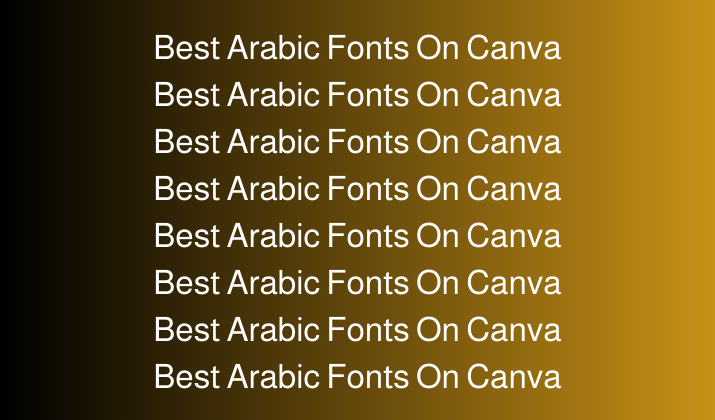
Almarai font is the best option if you want your Canva creations to feel more modern. Boutros created an easy-to-read typeface for both online and offline media.
Its calligraphic structure, strictness and simplicity and clarity on geometric appearance are hard to ignore.
Thanks to its contemporary and clean design, the typeface is also suitable for a variety of uses, including corporate branding, advertising, publishing, and digital media.
Again, the Almarai typeface comes in four weights: light, regular, medium and bold, giving designers plenty of freedom to choose the ideal weight for their project.
Whatever suits your fancy, go ahead and use a bold design for the headline or a lighter design for the brochure!
Additionally, Almarai typeface is known for its excellent letter spacing and kerning, which makes even small text extremely readable. It includes alternative characters, such as punctuation and numbers, to allow artists to create attractive and original designs.
This typeface is not limited to Arabic. It can also handle Farsi and Urdu. His elegant, understated style was also prevalent in these languages.
14) Tajawal
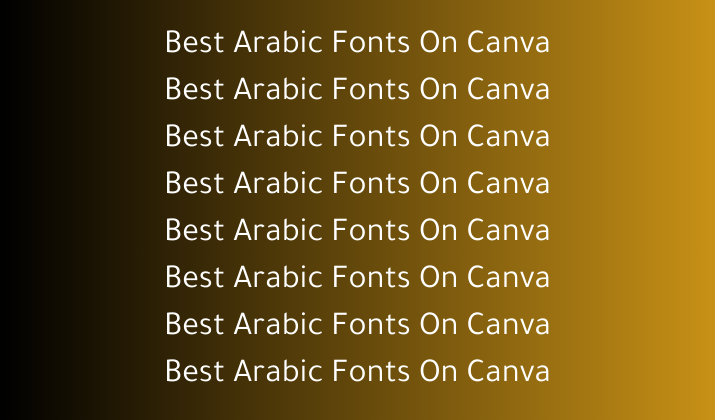
On Canva, Tajul is an additional Arabic typeface. The combination of Arabic and sans-serif Latin letters in seven different weights makes this typeface truly unique.
You will also notice that it follows the principles of Arabic script calligraphy while maintaining a contemporary geometric shape. Because of its versatility, the typeface can be used for both print and web projects.
Additionally, its flowing shape provides a striking visual appeal. Making the Tajik font readable at all sizes was Boutros’ main goal when he was designing it.
This explains the font’s contemporary geometric style and low contrast. It can be used for formal events as well as for any of your artistic endeavors.
Tajul’s adaptability is another interesting quality. You can associate it with fonts in the same family as Gotham because it is a member of the sans serif family. It undoubtedly improves the beauty and visual appeal of your design.
As a result, you can use it for most social media posts, flyers, website designs, brochures and logos.
15) Baloo Thambi 2
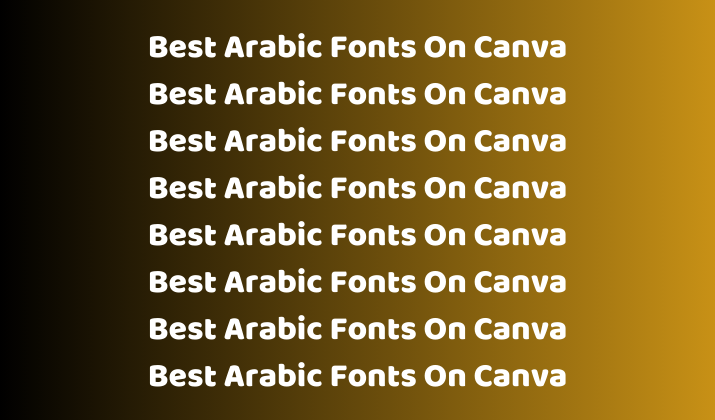
If you want to give your Canva creations a fun and whimsical feel, you should consider using Blue Thumbi as your Arabic font. This whimsical typeface is particularly suitable for children’s books and other imaginative works.
He was designed by EK Type, and his furry coat and pointed claws are his most distinguishing features. Its unique and exciting nature will draw attention to your design when used.
Note that this typeface offers more possibilities than the blue variant that came before it. Added more characters, styles and weights from delicate to bold.
It is interesting to note that the lighter version of Blue Thambi has a vibrant vibe that gives life to every single word on the page. It is a great option for many projects due to its comfortable and reliable design.
ALSO READ:
- Vanessawest.tripod
- BlockSite Alternatives
- SuperSummary Alternatives
- DALL-E Free Alternatives
- Terrarium TV Alternatives
- Obsidian Alternatives
Conclusion
As you can see, Canva offers a variety of Arabic fonts to choose from.
The best aspect? You can access them if you have a Canva Free plan. That way, you don’t have to worry about getting a subscription before adding your design to them.
Fonts have different uses. Some are sophisticated and polished, while others are carefree and fun.
Just make sure to choose one that best describes the theme of the design.
